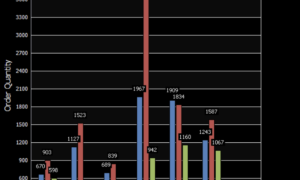Excel is a strong tool that has come to be associated with data analysis. Learning how to analyze data in Excel can greatly improve your productivity and decision-making, regardless of your level of experience. Calculation simplification is a crucial component of data analysis that can speed up the process and guarantee accuracy. We shall examine the SUMIF function in this article as a useful tool for summing data according to particular standards, improving the effectiveness of data analysis. You’ll discover how to utilize Excel SUMIF efficiently in real-world situations with the help of examples and advice from experts.
Understanding the SUMIF Function
Using the SUMIF function in Excel, you can add values based on a given condition. SUMIF has a fairly simple syntax: =SUMIF(range, criteria, [sum_range]). The criteria, which provide the prerequisite for including values in the calculation, are represented by the range parameter, which reflects the data range you want to compare against them. To further specify which cells will be added together, use the optional parameter sum_range.
Explanation 1: Totaling Sales Data
Consider a spreadsheet with sales data that has columns for “Product,” “Salesperson,” and “Revenue.” You need to figure out how much money a particular salesperson brought in overall. Here is how SUMIF can be used:
Wherever you wish the result to show, choose an empty cell.
Press Enter after entering =SUMIF(B2:B100, “Mark”, C2:C100).
This example uses “Mark” as the search criterion, “Salesperson” as the column to be represented, and “Revenue” as the column to be totalled. When it finds occurrences of “Mark” in the “Salesperson” column, Excel will sum the associated sales and display the total in the chosen cell.
Example 2: Making conditional budget calculations
Consider a spreadsheet with categories and expenses for your budget. If a certain category of spending surpasses a certain threshold, you wish to determine the overall costs. SUMIF can help you do the following:
Make a cell with the value 1000 where you will provide the threshold amount, for example, D2.
Wherever you wish the result to be displayed, choose an empty cell.
Press Enter after entering =SUMIF(C2:C50, “>=”&D2, D2:D50).
In this instance, “>=”&D2 specifies the criteria (more than or equal to the threshold amount in D2), and “C2:C50” stands in for the “Expenses” column. Excel will add up the costs that fall within the given criteria, and the result will be shown in the cell you’ve chosen.
How to Use SUMIF Effectively
Take into account the following advice to further simplify your data analysis in Excel:
Dynamic Criteria: You can refer to cells that contain the criteria rather than hard-coding them into the SUMIF function. This makes it simple to adjust the criteria without having to alter the formulas.
Asterisks (*) and question marks (?) are examples of wildcards that SUMIF provides and which might be helpful when trying to match incomplete or inconsistent data. As an illustration, the expression =SUMIF(A2:A100, “Apples*”, B2:B100) would total values when the “Product” column begins with “Apples.”
Numerous Criteria: SUMIFS can be used for numerous criteria, whereas SUMIF only handles one condition. You can sum data that matches multiple criteria at once with this function.
Conclusion
Calculations for data analysis can be made simpler with the use of Excel’s SUMIF function. You can effectively sum data based on specified criteria by becoming an expert in this function, which will save you time and guarantee the accuracy of your analysis. You will improve your Excel data analysis skills by using the real-world examples and advice in this article, which cover everything from adding sales data to creating conditional budgets. You’ll discover new opportunities for organizing and understanding data as you delve deeper into Excel’s robust capabilities, advancing your skill in data-driven decision-making.


































